The Silent Brand Killer: Tech Frustration in the UK
How app performance impacts brand loyalty, according to our new UK survey
When apps fail, brands fail.
From the moment we wake up, we are on our smartphones and in our favourite apps. As our reliance on apps grows, the quality of a brand's app experience has become business-critical. And while we often bond over complaining about technology—a daily topic as popular as moaning about the British weather—it rarely ends with a quick vent with friends. There’s often more emotion behind it, and ultimately brands pay the price.
To understand the causes and results of user frustration, Amplitude surveyed 2,000 smartphone users in the UK. We delved into the specific app frustrations driving people away, the emotional impact of poor design choices, and the unique preferences consumers have across demographics.
Our research reveals a sobering reality for companies—poor app experiences can have devastating consequences for customer relationships, with 58% of UK users indicating they would likely abandon a brand completely after encountering problems with its app.
This staggering figure underscores how deeply digital experiences are now intertwined with brand perception and customer loyalty. We’re sharing our customer behavior research today so organisations can act on these crucial insights to increase retention, improve digital experiences, and drive brand loyalty.
What apps are customers using—and returning to?
Nearly three-quarters (73%) of the apps on our phones are gathering dust, with people averaging 48 apps in total but only engaging with 13 on a weekly basis. Consumers are intentional about app management, with almost half (44%) of people saying they limit the number of apps they download to avoid phone clutter, and 28% regularly deleting those they no longer use.
In this context of careful app curation, brands face pressure to earn their spot on the home screen. People won’t hesitate to delete an app that frustrates them, and some app types are more prone to this scrutiny than others. Shopping, transportation, and social media apps top the list of most frustrating apps for people. In order of most frustrating to least frustrating, the list goes:
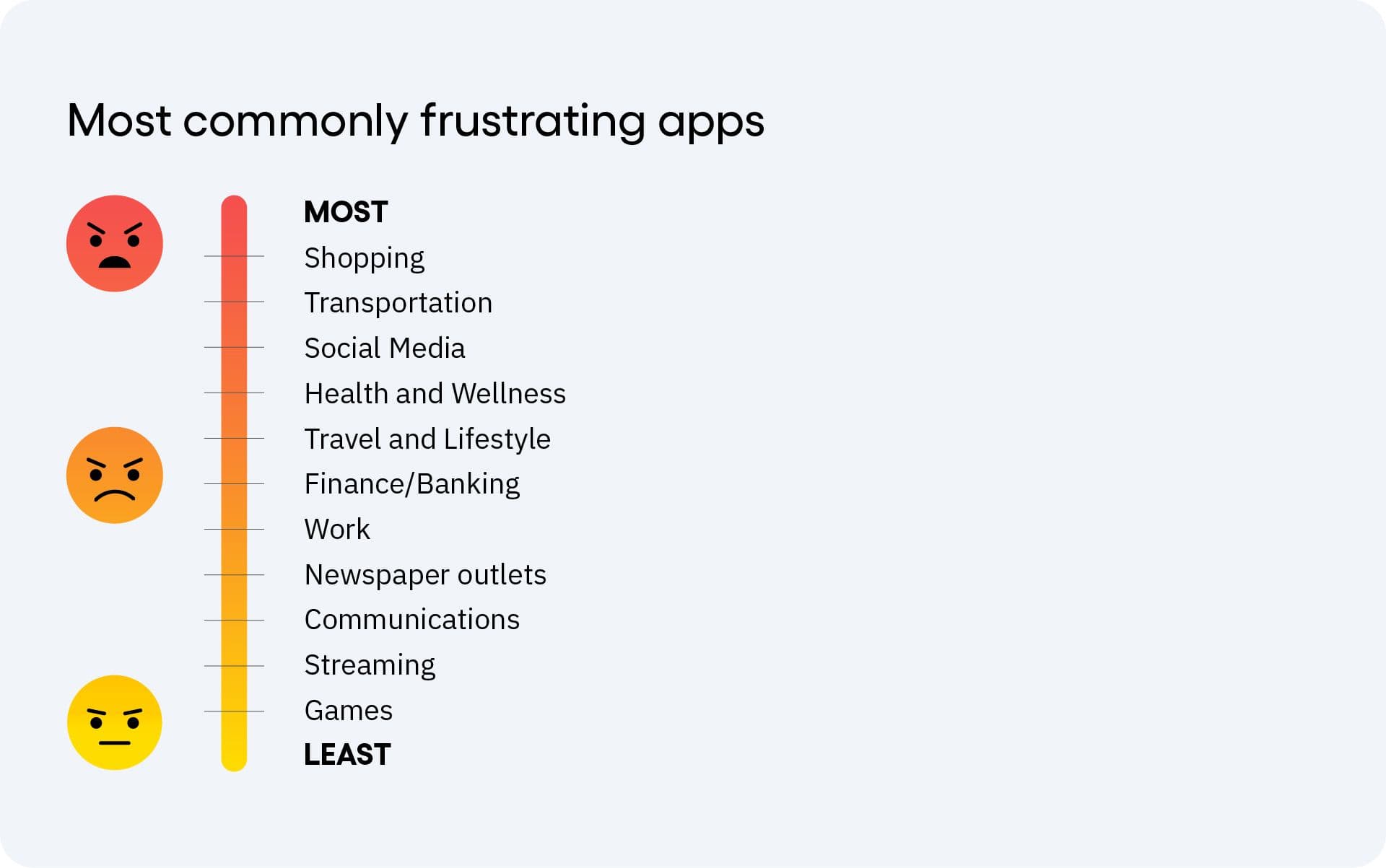
What features are most frustrating?
Across all generations, the top causes behind app frustrations are clear: Glitches, slow load times, and intrusive pop-ups rank highest. But there are some subtleties among certain age groups. Gen Z are not as frustrated by popups as others, whilst Boomers are particularly annoyed when having to create a new account within an app—not an issue for other generations.
Privacy and security are high on people’s agendas, with more than half (55%) citing “working out privacy settings” as a major frustration. This signals a sense of intention among users when it comes to the information apps collect and the access they request. People expect transparency, both for what data is being gathered and why. Organisations need to provide clear justification and make privacy settings intuitive, or risk eroding trust.
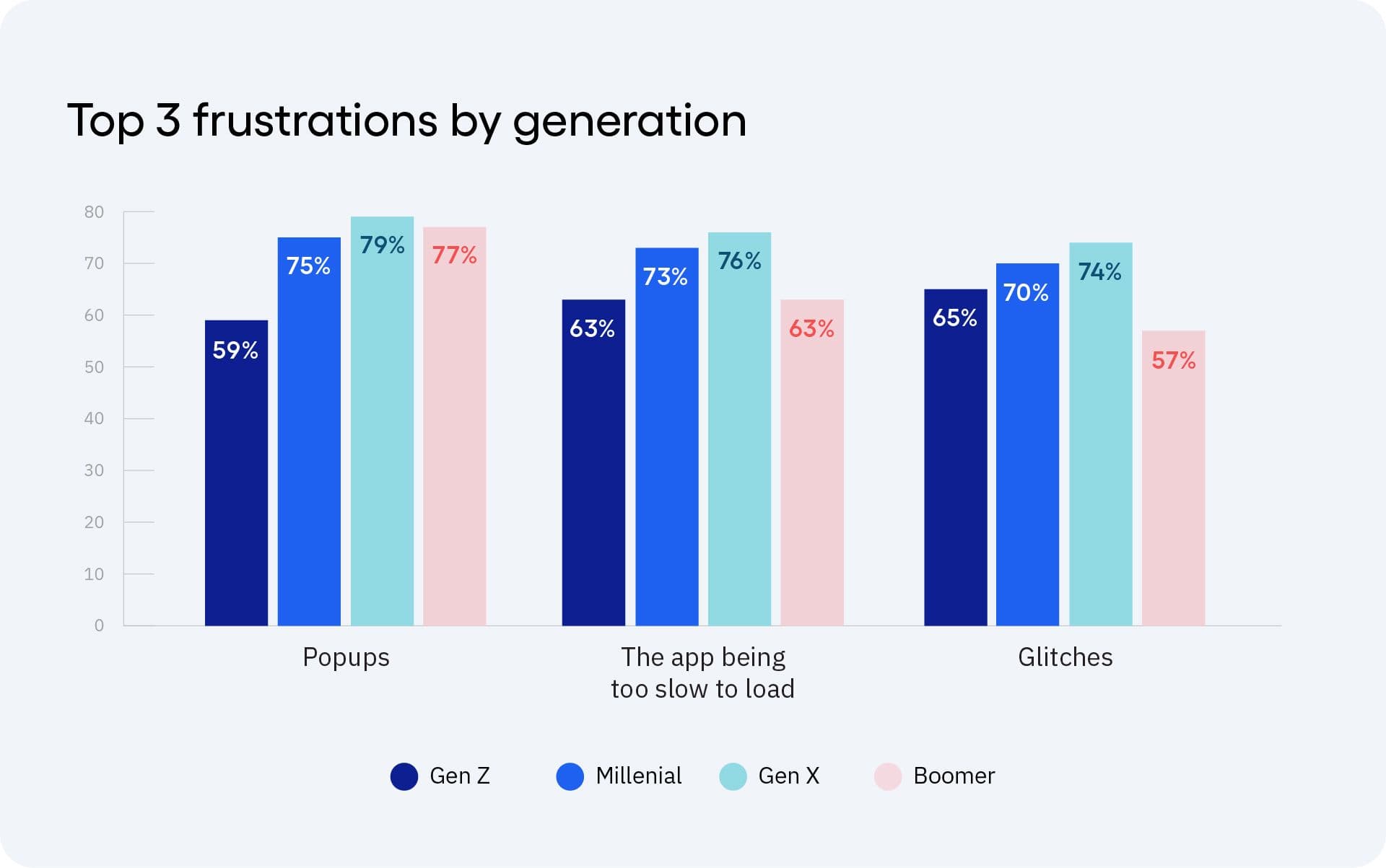

Zooming in on popups
The topic of popups garners strong views from the majority of people surveyed. Over half (54%) say they never respond to in-app popups, whether it’s to make a purchase, upgrade, subscribe, or claim a promotion.
The remaining 46% have engaged at least once, but this varies sharply by generation. Gen Z are the most responsive, with 53% saying they’ve followed through on a popup at least once. In contrast, only 17% of Boomers say the same.
This is a clear signal that people want popups that are better timed, less intrusive, and more relevant to their unique needs - and this is especially important for older generations.
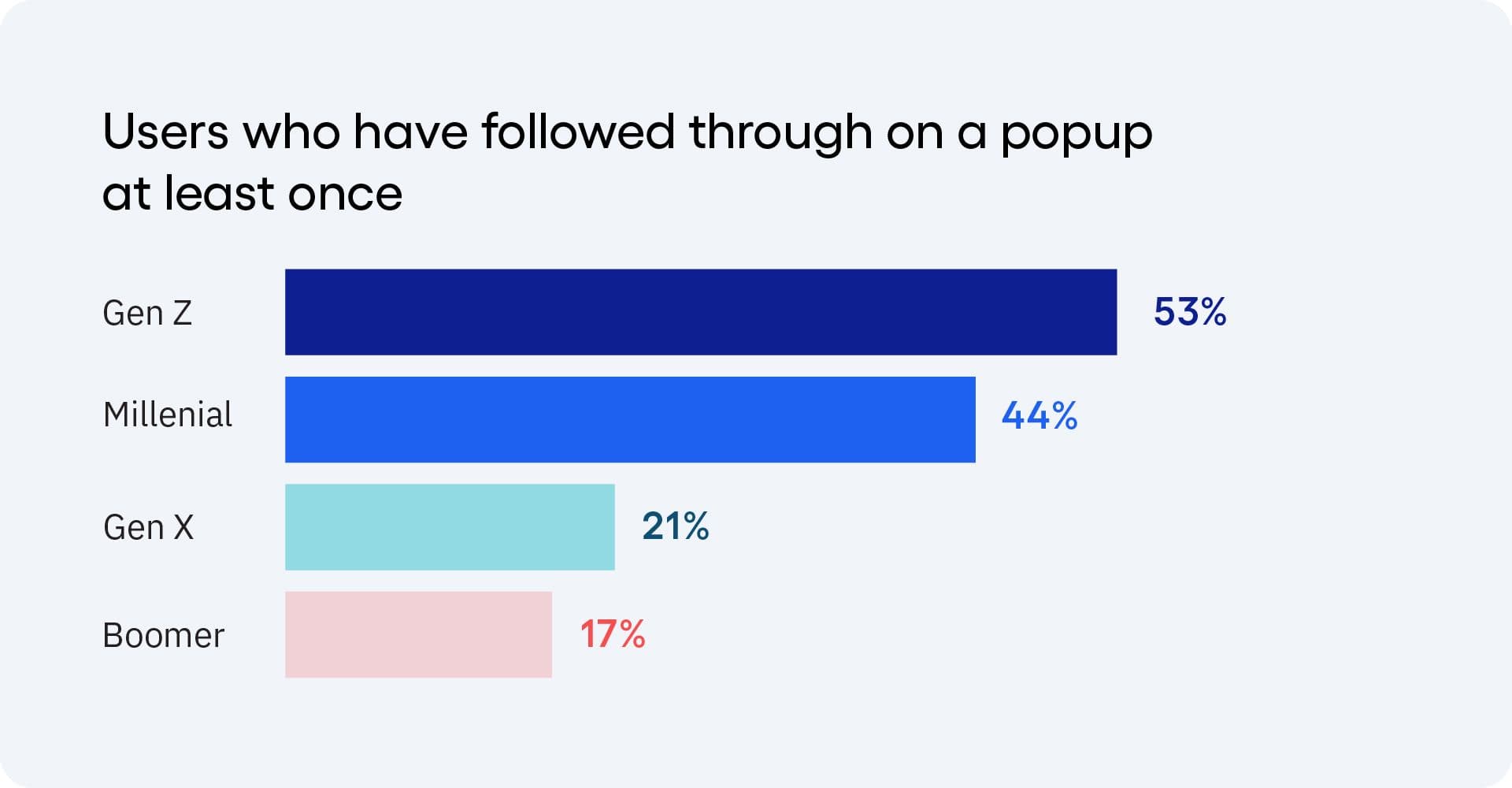
The loyalty tipping point
Tap, glitch, gone. People give up on an app very fast when it doesn’t work as expected. More than a third (35%) of UK consumers will ditch an app within minutes if it doesn’t function properly—that’s less time than it takes for a kettle to boil. More impatient still, 10% abandon an app for those reasons within seconds.
A significant number of people also face frequent app crashes, with two in five (40%) reporting that an app crashes on them at least once a month. This is especially true for younger generations, with 49% of Gen Z and 51% of Millennials experiencing crashes compared to just 26% of Boomers.
When an app does crash or freeze, it takes an average of 19 minutes to get back up and running. Furthermore, only 16% of people reach out to tech support to either report an issue or ask for help, indicating they are more likely to ditch a brand than to resolve an issue.
More important still is that poor app experiences can have devastating consequences for brands, with 58% of people indicating they would likely abandon a brand completely after encountering problems with its app.
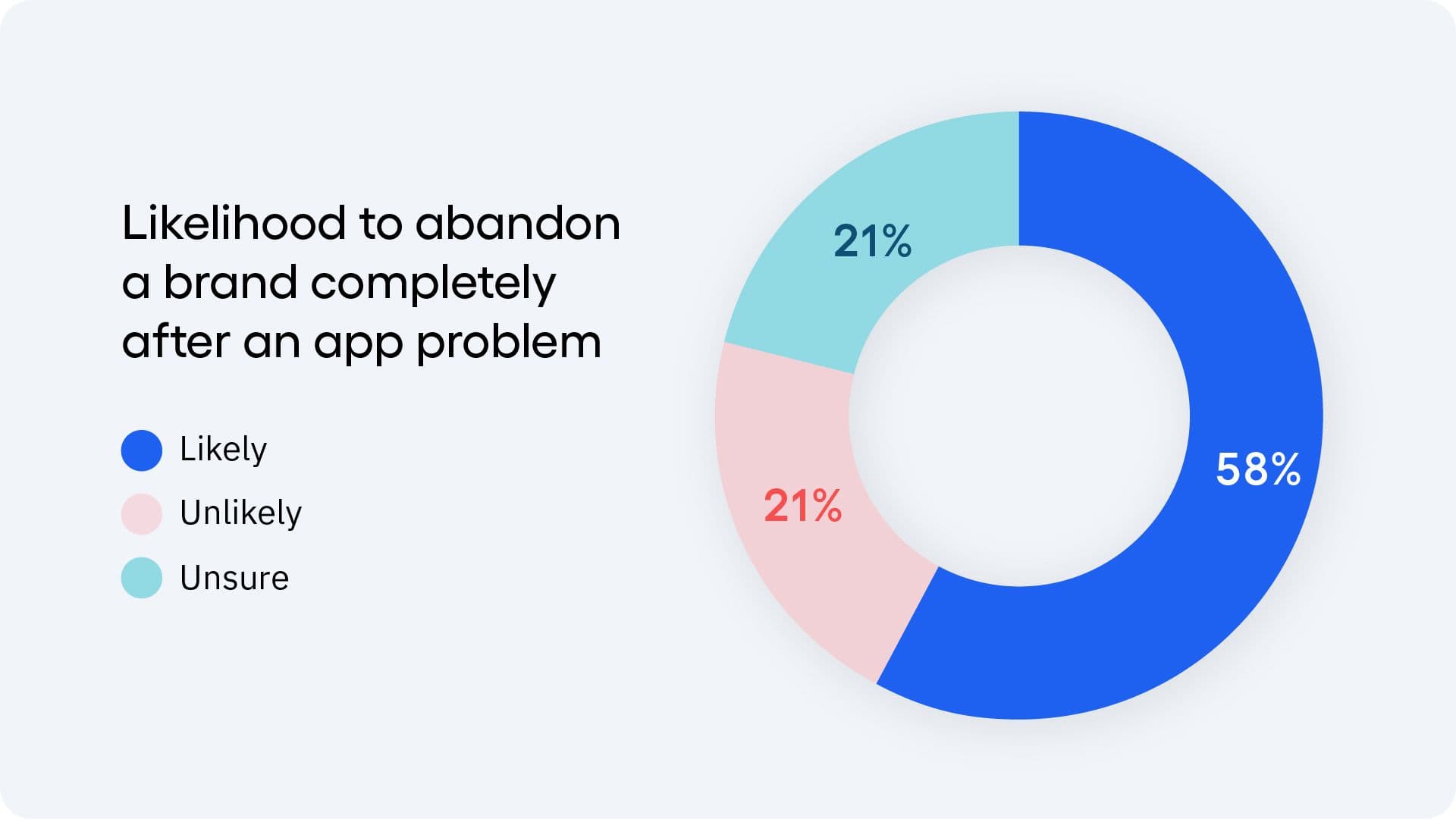
The emotional impact runs deep, with nearly half (45%) of people who have encountered poor app design admitting to feeling enraged by it. This figure is higher for younger generations—Gen Z and Millennials—with 59% of them feeling enraged when faced with app design issues.
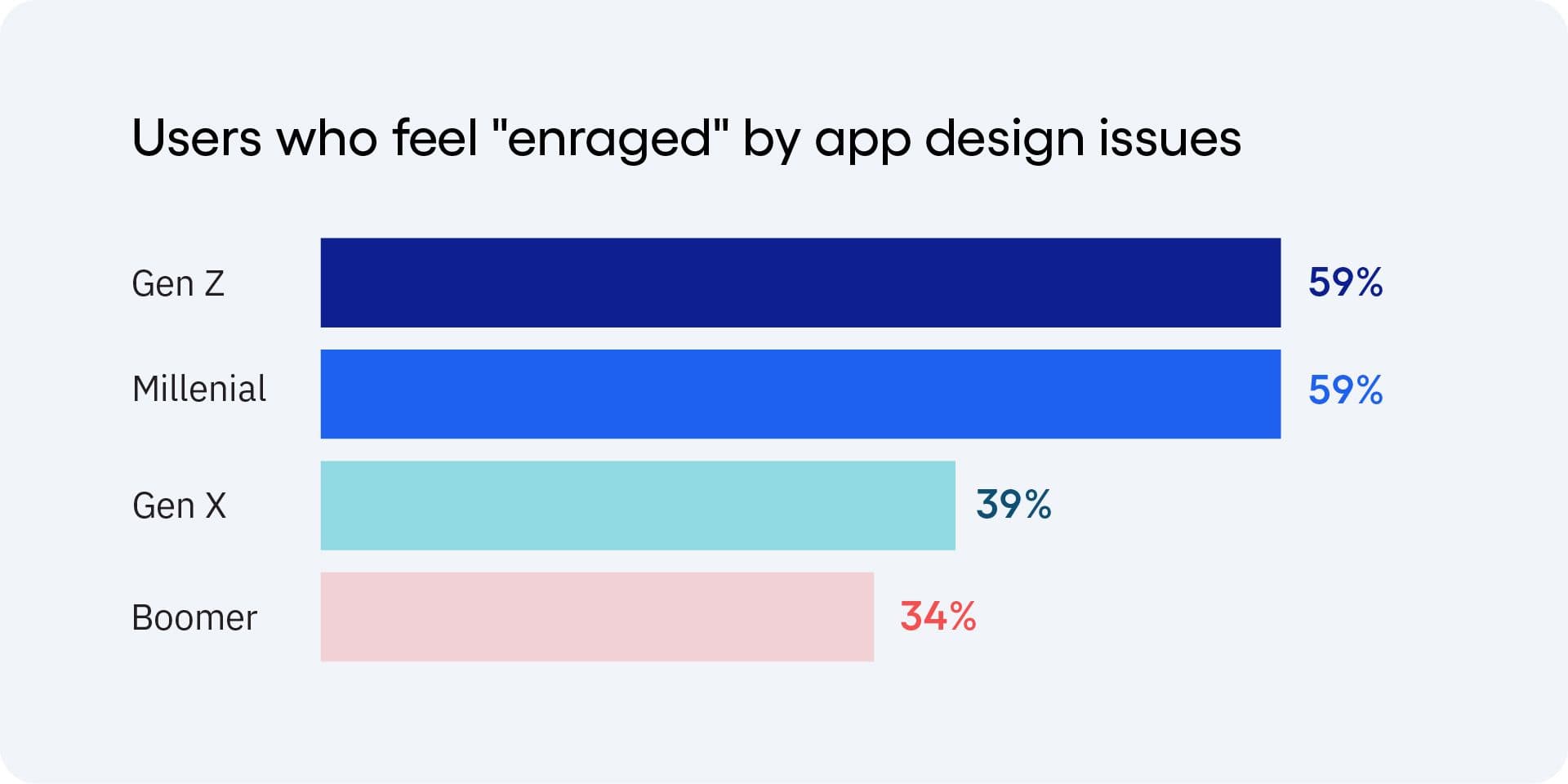
Reducing frustration to retain customers
Retaining users and minimising frustration hinges on app reliability rather than aesthetics. A staggering 85% of people prefer a basic-looking app with no glitches over one with a sleek design but occasional problems. This overwhelming preference for functionality demonstrates that people value dependable performance above visual appeal.
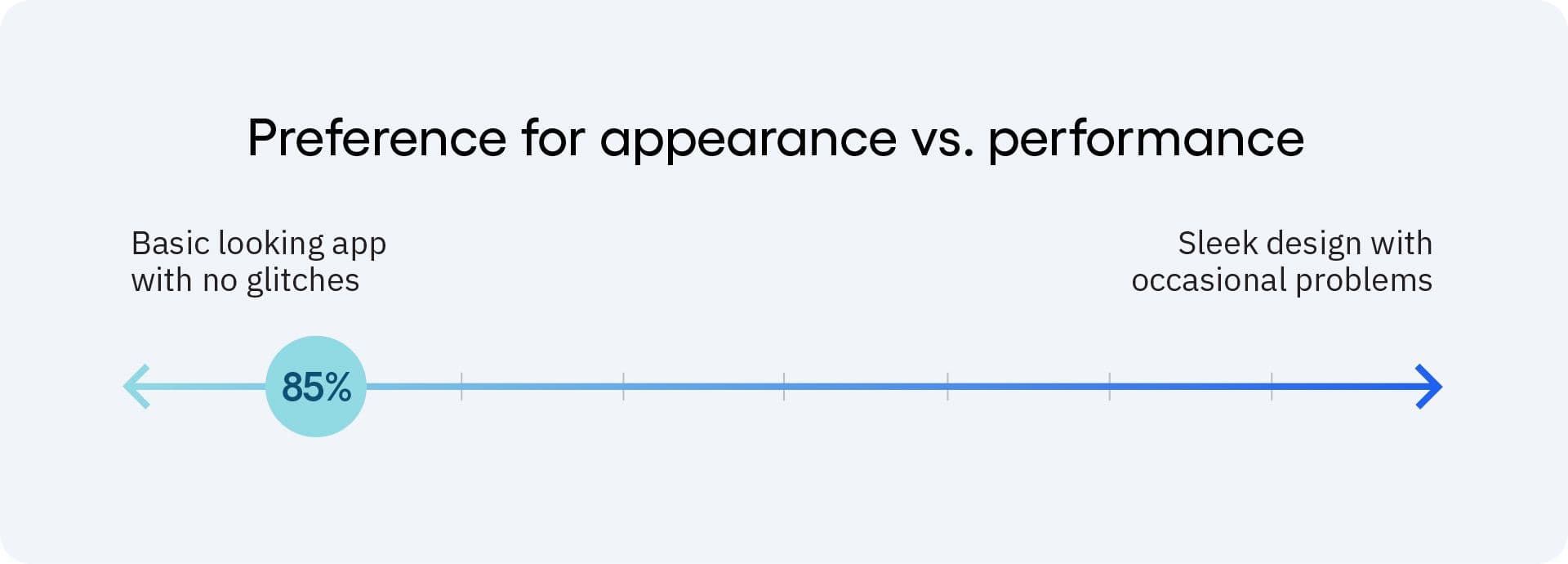
Meanwhile, the concept of super apps—platforms that integrate multiple services like messaging, payments, shopping, and transportation into a single application—appeals to 41% of UK users overall. There are significant generational differences: 56% of Gen Z finds this appealing compared to just 24% of Boomers.
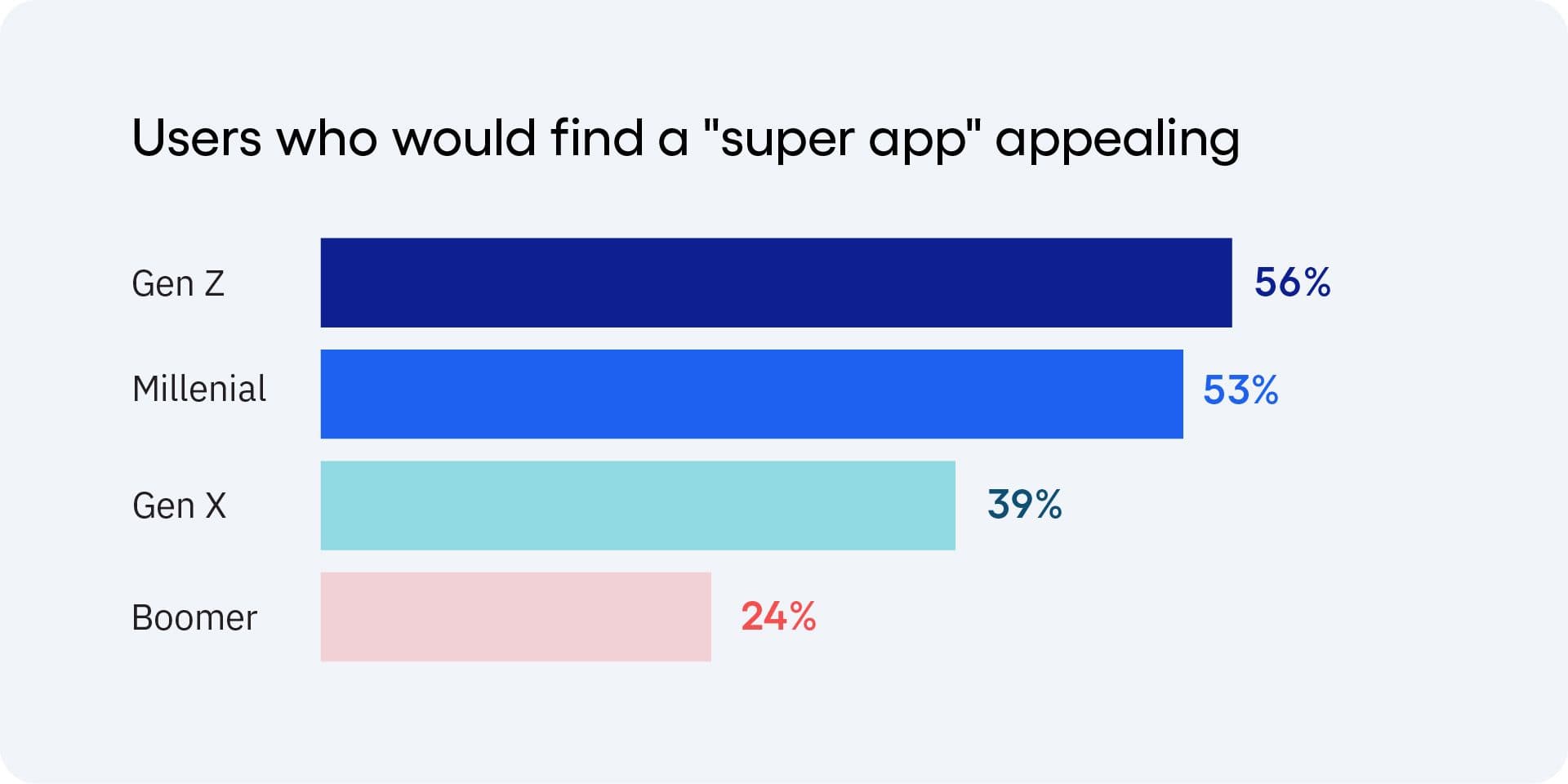
Digital analytics: Predicting and preventing app abandonment
The core takeaway of our research: People want simplicity, reliability, and fewer distractions.
Frustration with apps is more than just glitches or slow load times; it’s about feeling unheard and uncatered for. When people complain about technology, there’s often a deeper reason—such as a moment where something didn’t work as expected, where friction disrupted their flow. For brands, these moments matter.
To build better digital experiences, companies need to go beyond surface metrics and develop a clear picture of the entire customer journey. Where is it the people get stuck, what behaviours signal frustration, and how expectations are evolving—these all influence digital product design.
Amplitude believes the path to better digital experiences is through data—gathering it reliably, deriving insights from it, and acting on it. With this deeper understanding of your customers, your organisation can design experiences that not only reduce friction but build loyalty, trust, and long-term growth.

Lee Edwards
Vice President, EMEA, Amplitude
Lee Edwards brings over 25 years of experience from leading technology companies in Europe and plays a pivotal role in driving customer adoption across the UK, France, and Germany.
More from LeeRecommended Reading

Why Context Engineering Matters More Than Prompt Engineering
Dec 16, 2025
9 min read

The Product Benchmarks Every B2B Technology Company Should Know
Dec 11, 2025
5 min read

How Amplitude Taught AI to Think Like an Analyst
Dec 11, 2025
8 min read

Amplitude + OpenAI: Get New Insights in ChatGPT via MCP
Dec 10, 2025
3 min read

